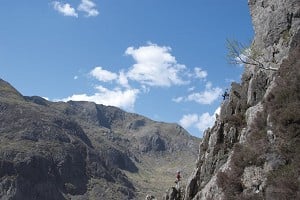
Scottish climber Niall McNair recently made the third ground-up ascent of Requiem (E8 6c) E8 6c at Dumbarton Rock, near Glasgow. Although not strictly newsworthy, Niall's story of grit and determination is worth sharing: his successful ascent was the result of a twenty-year dream and four years of trial and error.
First climbed in 1983 by Dave 'Cubby' Cuthbertson, the line follows an awkward crack up to a bouldery, exposed headwall with a gutsy, heart-breaker throw for an unforgiving finishing hold - not to mention the crag's trademark slippery-smooth basalt. The first ground-up ascent was made by Will Atkinson in 2011, followed by Scottish dark horse Iain Small, who narrowly pipped Niall to the post for the second ground-up ascent this summer by just five days.
Niall's affair with the route goes far beyond his preparation and numerous attempts; it is a veritable infatuation that begun as a young climber. As the UK's first E8, Requiem was hailed as one of the hardest routes in the world at the time of its creation and has since become an iconic line in Scottish climbing. It is the root of Dave MacLeod's famous Rhapsody (E11 7a) E11 and is increasingly attracting curious foreign climbers due to its reputation as an historic testpiece. Niall's endless endurance and high technical ability - not to mention his gymnastic flexibility - have combined to produce one of Scotland's best onsight trad climbers; his ticklist includes numerous ascents up to E7, often on bold mountain routes and always completed onsight or in ground-up style.
As a destination, Dumbarton Rock has received its fair share of bad press over the years. The volcanic plug's location beside an industrial wasteland and the antics of its local youth - known as 'Neds' in local parlance, who are often intrigued by the presence of climbers - in the shadows of the castle have tainted preconceptions of the crag. Mosaics of broken glass, abandoned shopping trolleys and rusty beer cans juxtapose the natural landscape beyond the shipyards: the Clyde estuary flowing out to sea and Ben Lomond signposting the fringes of the Scottish Highlands. Whatever its attraction or repulsion, 'Dumby' has become synonymous with some of the biggest names in Scottish climbing: Cuthbertson, MacLeod and Smith, to name but a few.
In recent years, the surroundings have noticeably cleaned up, with housing estates edging ever closer to the crag and civilising its environs. The rebellious scrawls of bright grafitti have largely been scrubbed away, with only the most stubborn and well-integrated slogans resisting defeat alongside the permanent patches of chalk. As John Hutchinson writes on Dumby.info, 'These differing graffiti tell a story of a strange mix of ingredients that make Dumbarton rock one of the most interesting and addictive climbing spots around.'
To put Niall's commitment to the line into perspective and to celebrate his achievement, we interviewed some of the people who have witnessed his 'persistence of vision' - coincidentally the name of a classic 7a+ leading into Requiem - and his inspiring journey to latching the finishing hold, before speaking to the man himself...
'It was a line for a future generation. I didn't stop to think that actually, I was about to become part of that future generation'
It's impossible put Niall's fascination with Requiem into context without first speaking to the man with the vision for the line: Dave 'Cubby' Cuthbertson.
Dave initially spotted Requiem in the early seventies. Aid climbing played an important role in becoming a well-rounded mountaineer in this period and Dave planned to further his technique with a visit to Dumbarton Rock - 'the mecca for high standard aid climbing' of its time. However, on seeing the Brian Shields 'big four' for the first time - Cyclops, Requiem, Chemin De Fer and The Big Zipper, the routes had an unexpected effect on him: 'I was so intimidated that I never even set foot on the rock,' says Dave. 'In fact, I recall a rumour suggesting that there was no known second ascent of Requiem and the big, near ground fall by a certain Ken Crocket only added to its reputation. Of course I'm talking about aid climbing here, free climbing such a line would never have entered people's minds,' he adds.
Fast forward to 1980. Dave moved to Glasgow in late 1978, but it was not until 1980 when he considered himself mentally and physically ready to contemplate an attempt on the slightly easier aid routes: 'It was, if you like, the beginning of a love affair with a strange, suburban setting that makes climbing at Dumbarton Rock so utterly unique and endearing. In this regard, Stoney Middleton has some parallels.'
Eliminating aid on existing routes was becoming a fashionable trend. So much so that renaming was not uncommon, 'though one can argue also very disrespectful!' Dave adds. On good form in 1980, Dave had made a number of first ascents already that year and before long he had dispensed with The Big Zipper (via the Woops start), Cyclops and Chemin De Fer. Reflecting on these climbs, Dave comments: 'The latter two climbs were solid E5 but Requiem, for me at least, was a line for a future generation. I didn't stop to think that actually, I was about to become part of that future generation.' A few years later in 1983, whilst recovering from a climbing accident, Dave had time to think about and contemplate where he was taking his own climbing. 'So I decided that I should abseil down the line of Requiem and establish whether or not it was possible. Of course, it was.'
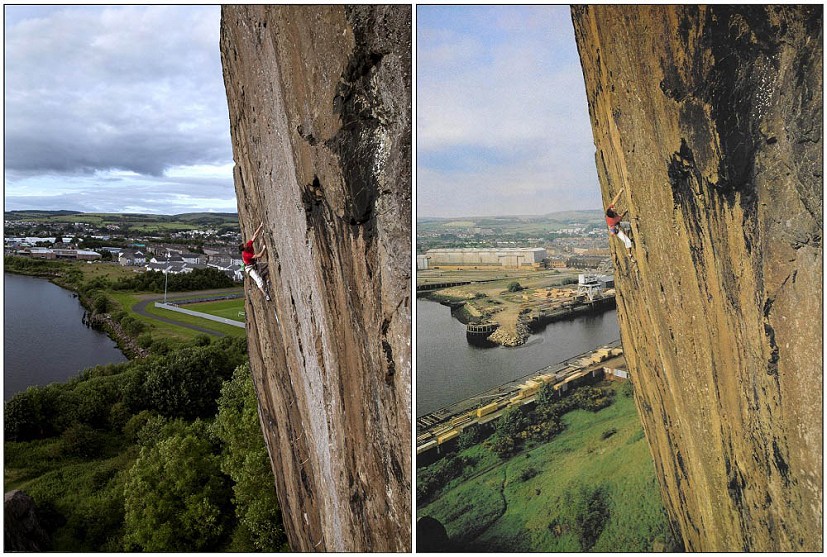
From an ethical standpoint, Dave's issue was the choice of tactic. He had no sport climbing experience and was an ardent believer in a traditional ground-up approach. Dave cleaned and inspected the line without practising moves or top-roping: 'My ascent of Requiem free was what I would describe as an extended yo-yo with ropes often left in situ. However, we never went beyond each successive high point, preferring to lower instead. It was all about giving the rock a chance.'
When Dave was nearing success, he reached the final crux move on four or five occasions, which proved difficult to overcome. 'It was beginning to grind me down and in the end I practised the move and subsequently did it first time', he says. 'Had I chosen not to practise the last move - and save for the yo-yoing - my ascent would not have been so dissimilar when compared to Niall's. The ascent was not as protracted as one might think either, especially as I had to take some time out after pulling a tendon in my foot while bouldering.' Dave put roughly twelve days of climbing into the line before making the first ascent.
Regarding Niall's journey to ticking the climb 35 years later, Dave is humbled by his commitment to the ground-up cause, despite the route being within Niall's capabilities for a quick ascent, had a more convenient headpoint approach been employed. 'I think it's wonderful that Requiem and other routes at Dumbarton are finally receiving the recognition they truly deserve and that climbers understand the Dumbarton experience,' he says. 'At the level top climbers are operating at today, a Requiem onsight is undoubtedly possible and one-day ascents ground-up I can imagine becoming the norm. Don't get me wrong, all of this is said with huge respect for those climbers who have climbed Requiem recently and for Niall whom I admire, I'm just attempting to put these achievements into some sort of perspective and take into account the overall difficulty of the climb.'
Despite the route's acclaim as the UK's first E8, Dave doesn't recall grading Requiem as such and didn't appeal for recognition in terms of its difficulty on a global scale.'When pushed by Dave Jones as he was compiling his book, I did suggest E7 7a. The climb was for some strange reason compared to Strawberries (E7 6b) which I did in '86. The Requiem crack alone is way harder than Strawberries,' he explains.'There was never any hesitation about giving a grade, I just found it difficult coming to terms with spending that length of time on a route and then coming up with a meaningful grade that made sense! Of course nowadays that's all straightforward, isn't it!'
'For my generation it's always been a totemic route.'
Iain Small - another of Scotland's largely unlauded onsight trad climbers - shared Niall's goal and is credited with catalysing Niall's success on the line, having helped him to unlock key beta. As is typical of Iain, he preferred to keep his own ascent - which he made just five days before Niall's - out of the limelight, but was nonetheless happy to give an insight into Niall's climb.
'It was a relief to get the last move done but also great fun. Cubby really had the vision and attitude, being able to take on such untested ground back then. I was just getting into climbing when Dave made the first ascent, so for my generation it's always been a totemic route.'
Iain joined in with Niall's ground-up plan, but Niall made the crack appear so desperate in their first session together that Iain retreated to the sport wall. 'Next visit, though, I was caught up in Niall's wake - after all, how many E8s are there in Scotland you can safely ground-up, and that come with so much emotional baggage?' Iain asks. 'Niall has, as always, given his unflinching commitment to the ground-up cause and ridden the emotional ebb and flow.' Commenting on Niall's inflexible and busy schedule, Iain adds: 'What the headline hides is the fact that he's only able to make the M8 pilgrimage on a fixed evening once a week, putting up with whatever conditions prevailed.'
Iain's ascent sparked a friendly faux-rivalry between the pair, as he nabbed the coveted second ground-up ascent. 'I still feel rather guilty for heading down to Dumby on a weekend in great conditions, rather than a hot sunny evening, and while Niall was off on a family holiday,' he says. 'He will never let me forget that, I think. But I've cleaned an overgrown, 3 star Cubby E7 on Creag a Bhancair for Niall as an act of penance.'
'The mad b*stard wanted another go placing gear on lead that day...mental case.'
UKC's very own developer, Martin McKenna, earned some belay points by holding the ropes on Niall's successful ground-up attempt. He gave an account of their evening.
We met up down the crag at 6ish. Pretty much the first words out his mouth were "Yes, I know Iain has done Requiem. I'm not bitter!" - all jokingly, of course.
After the usual "warm up" of Chemin de Fer and a stiff pull on Mugsy, Niall got straight on Requiem, making it all the way to the final move before taking the lob...again! Back on the ground there were a few more mutterings about Iain, "He's cheated on me!", "I'll never climb with him again" and "backstabbing b*stard." We had a small break, I had a quick blast on another route and a cup of tea, then Niall was ready to go again.
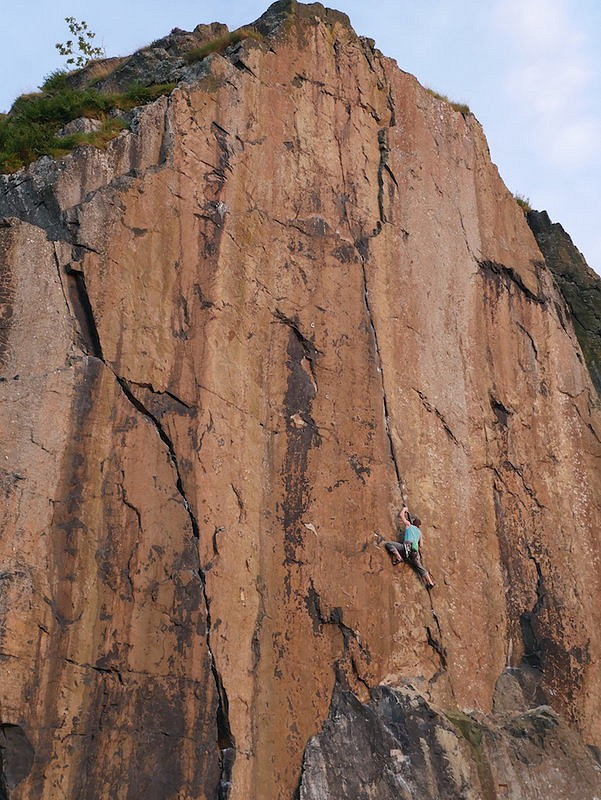
As usual, Niall climbed the crack and upper groove very well. Reaching the final move, with everyone at the crag cheering him on, I was once again setting up for the big catch - only this time there was an almighty scream. He'd stuck the dyno. It was quite comical; he was hanging there and looking down for a moment, clearly taking in the fact that it was in the bag. As he pulled over onto the top you could hear him from the ground having a good old cry.
Lowering him off to strip the gear, he started brushing the holds: the mad b*stard wanted another go placing gear on lead that day...mental case. I'd have been cracking a beer!
'My wife, Emma, likened the whole process to an addiction: if didn't get my fix or it wasn't of a good enough quality, I would start having withdrawal symptoms...'
Niall is 37 and lives and works in Edinburgh as a community support worker (soon to be arborist). He is married with two young children.
Announcing his success on Facebook, Niall expressed his joy having just climbed the 'King Line of Central Belt Scotland' : a description that speaks for itself in terms of his motivation for trying Requiem.
'It's not just the quality of the line,' he says, 'but all the history it contains, from the story of Cubby's first ascent making it the hardest rock pitch in the world 35 years ago, to Craig Parnaby who in the late 90s touched the top on only his 3rd attempt but never returned to top it out. And of course, there's MacLeod's well documented direct finish, Rhapsody, the world's most famous eliminate - sorry I meant first E11...'
Added to this is the fact that Dumby is where Niall undertook his rock apprenticeship, after spending his first two years of climbing indoors. 'Every time I visited, I always looked up wondering how hard the crack would be and how it would feel to be up there on the headwall,' he explains. 'It's always been there in the back of my mind.'
The next step involved dreaming up a plan that Niall believed would enable him to onsight Requiem: 'I would get my sport onsight level up to 8b and then go to the States for six months and learn how to climb cracks,' he explains. How did that work out for him? 'Ermm, I managed neither of those things. I had a family instead, which I think was harder work.'
Niall's first encounter with the moves came in August 2014. He couldn't find a partner willing to go into the mountains and good conditions encouraged him to 'just get on with it.' In his comically self-deprecating manner, Niall explains:
'I knew there was no way I was going to onsight it: I've got all the crack climbing skills of an epileptic raver juggling stoats. I think I had about four attempts that day and all ended at the same point: halfway up the initial crack at a flared section that I just could not keep my hands in. All I can remember is feeling that I had a long way to go, and that this was most likely going to take a lot of time and effort.' He was correct in his prediction.
Niall's preference for the ground-up style is not solely down to personal ethics, but also the result of a surprising fear. 'Generally, I climb most trad routes onsight or ground-up. I'll tell you an open secret: I actually hate abseiling, it freaks me out every time I go over the edge and then you feel the ab rope twanging across the rock, eurgh...I guess that's why I never really got into the headpointing thing.'
On Requiem, the choice of ground-up style was also a nod to Dave's first ascent, since he too had attempted it ground-up over many sessions. The decision to stick with this style wasn't easy for Niall. 'I did debate with myself frequently whether it was better style to practise a route like this and do it quickly and lead it cleanly, say over two days,' he says, 'rather than to have this long drawn out process, leaving gear in place and it taking however long it was going to take.'
When Niall finished his attempts on Requiem last year ahead of the winter season, his high point was the top of the crack and ledge. On his very first go of this year, he climbed the crack smoother than he had ever done previously, passed his highpoint and climbed to the final gear on the headwall before getting too pumped to go any further. 'I ended up embarrassing myself by yelling that I was too scared to climb any further! It was an overwhelming moment for me... that was the very first time that I truly felt this was going to be possible.' Unfortunately, Niall proceeded by failing to get past the crack on his next session; a case of two steps forward then three steps back.
Aside from his usual routine of bouldering at the wall twice weekly and carrying out a campus board and rings session once a week, Niall didn't train specifically for the route - except for a stint of endurance training on longer indoor routes in the spring.
Although Will Atkinson pipped Niall to the post in 2011 by making the first ground-up ascent, Niall wasn't disheartened in any way, nor did he stray from his goal. 'Will's ascent completely inspired me and opened my eyes to what might be possible for me,' he explains. 'I had kind of forgotten about Requiem at this point because it seemed so far out of my depth with my usual approach of trying to do things quickly onsight or ground up. In fact, when I first heard he was doing it ground up and taking many falls, I sat bolt upright wishing I had thought of doing that first.'
Will was also a significant source of support for Niall, who was in touch throughout his attempts, being kept informed whenever Niall reached a new highpoint or couldn't get past a particular section. 'He did help to keep me psyched with his particular brand of cheeky enthusiasm; his first words to me after I'd done Requiem were "So happy for you! But also glad you didn't walk it!"'
As Iain explained, Niall teamed up with him recently to create a sort of symbiotic climbing partnership. 'This year, having Iain on board has been an interestingly collaborative and slightly competitive experience in that I needed his help and psyche to unlock some sections of the route, whilst knowing that there was equal chance of him completing it before me.' Niall's nickname for Iain - Laird FOMO-Maker (Fear Of Missing Out) - refers to his ability to sneak in opportune ascents of quality routes. Iain's aptitude for crack climbing helped Niall to adjust his beta at a stopper move halfway up, where the crack becomes flared and the footholds scarce. Iain reached a few moves above Niall's highpoint on his second attempt. 'He's just simply better at this sort of thing than I am,' Niall explains.'Using Iain's beta, I was able to make progress where previously, I had been completely stuck.'
Niall considers their teamwork highly efficient, despite - or perhaps because of - their differing personalities and styles of climbing. 'Iain likes the poetry of Norman MacCaig and can shake out on any and every hold,' Niall says, 'whereas I like techno and seem to have to blast through crux moves as quickly as possible.'
That's not to say that falling off agonisingly close to the top in this style wasn't frustrating at times for Niall. 'I've had to deal with disappointment on many different sections of the route,' he admits. 'I had to temper the negativity that I felt consequentially, especially when I wasn't able to reach my previous highpoint. The last few sessions were the most heart-wrenching, as I was hitting the top almost every time but not latching that hidden jug; the last move consisting of a blind dyno off a tips-only flared finger lock.' Fortunately, having Iain share the experience helped Niall somewhat: 'It certainly felt less lonely to see someone else tearing their hair out after falling from the same move time and time again. At one point, the pair joked about setting up an abseil, checking out the last move in secrecy and making a blood pact never to tell anyone. 'At least I think Iain was joking...' he laughs.
Niall has no idea what made the difference in the end for all of the elements to finally come together. 'In fact it was less than ideal conditions, sweatier than Mo Farah's underpants. I had also just returned from a two week family holiday and I was under a bit of personal pressure from Iain having done it five days earlier...'
As Martin's account revealed, Niall struggled to contain his emotions at the top of the crag. 'I'll be honest with you and admit that I blubbed like a baby when I eventually topped out! That moment is definitely up there with doing my first E7 or 8a onsights, reaching a level in climbing that I never thought possible when I first started climbing.'
Anyone who has climbed with Niall knows that he wears his heart on his sleeve when it comes to expressing his emotions. 'I get really excited when I see a big route that I want to climb that is on or near the limit of my ability,' he explains, 'and when it all comes together and I climb well, it makes me happy and content with life afterwards.'
But the flipside of this is that Niall has struggled to deal with the frustrations and negative feelings from falling and failure. Having had multiple near-successes in onsighting hard routes in recent years - blowing the last move and holds snapping on E7 onsight attempts - Niall has felt unable to detach emotionally from these episodes, to the point that he has 'even considered giving up climbing.'
'So, to actually finally top out on Requiem,' he continues, 'I felt a massive sense of elation but also relief in knowing that this gruelling ground-up process was over. I was also so pleased to have climbed the very first iconic hard route that ever I saw with my own eyes as a youth.'
Has ticking Requiem inspired Niall to try harder ground-up projects, or was it a chore to repeat a climb so much, in the end? At the moment, he's not so sure. 'For me, doing Requiem in this style fitted in logistically with my lifestyle in that I was able to head over after work during the week,' he explains. 'I can't see myself dedicating that much time again to another safe E8, simply because there aren't any more locally.'
This year alone, Niall has travelled to the crag roughly ten times after work, driving from Edinburgh to Dumbarton. 'It did become chore-like,' he admits. 'It also had a negative impact on my home life due to the many late nights I returned home and as a result of my subsequent grumpiness if I had a setback or made no progress. Emma, my long suffering wife, likened the whole process to an addiction: if didn't get my fix or it wasn't of a good enough quality, I would start experiencing withdrawal symptoms...'
'Dumby' as a crag - and as post-work session crag in particular - seems to be undergoing a bit of a revival. The local 'scene' (not the Neds, but the climbers) was an important factor in Niall's success. He explains: 'It was great to see the same people there week after week and see how they were getting on with their projects. There have been a few folk like Martin treating Chemin de Fer, the classic E5, as a ground-up project as well. Special mention must go to "Psyched" Simon Smith, who had made an ascent of Requiem earlier this year and was a great source of sneaky beta, even going as far as chalking up the final jug in the latter stages.'
For now, though, Niall has no plans to be making the Dumby 'pilgrimage' again immediately and wants to take a well-deserved break from the place. 'I'm pretty sick of driving back and forward on the M8 every week, to be honest,' he admits. 'Plus, I'm about to start my new career as a tree surgeon, so I imagine I'm going to be pretty knackered from that shortly!'
As for inspiring others with his determination, Niall has some tips for anyone struggling with a project - be it sport or trad, ground-up or headpoint:
'Keep at it. Find a partner of similar standard who also wants to do the same project. Treat every session as the chance to refine your climbing on part of the route. Take pleasure from all the small improvements or highpoints you make. Try not to get too down from any setbacks or plateaus. Go to other crags and do challenging routes within your limits when you can to give yourself a break and remind yourself why you enjoy climbing.'
Niall is an Ambassador for the charity Urban Uprising.



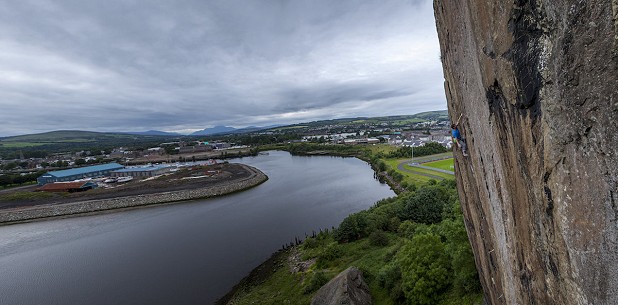
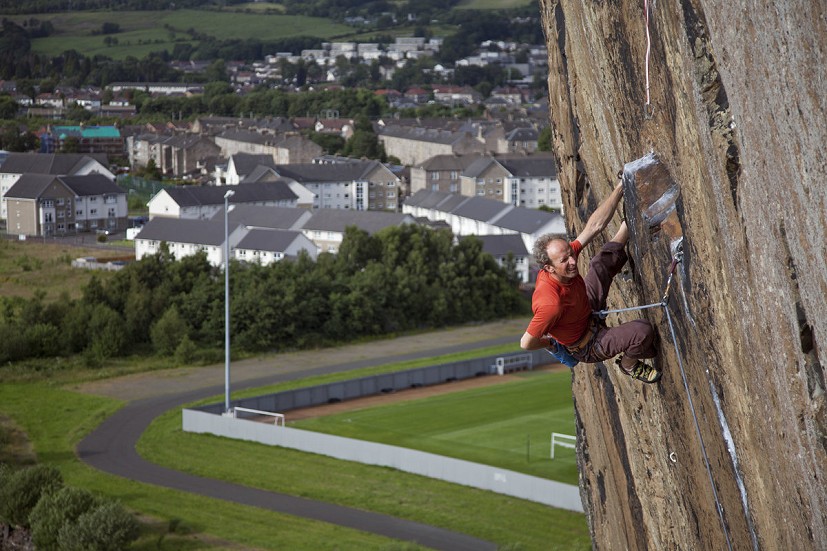
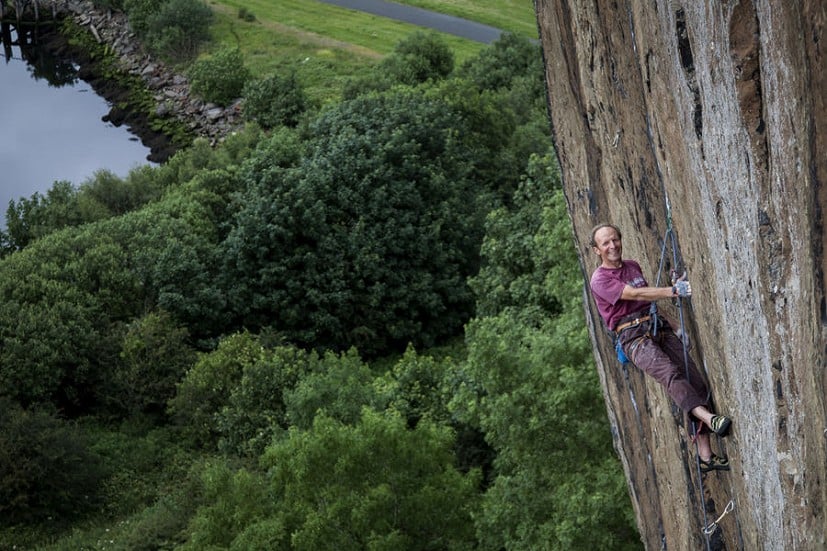
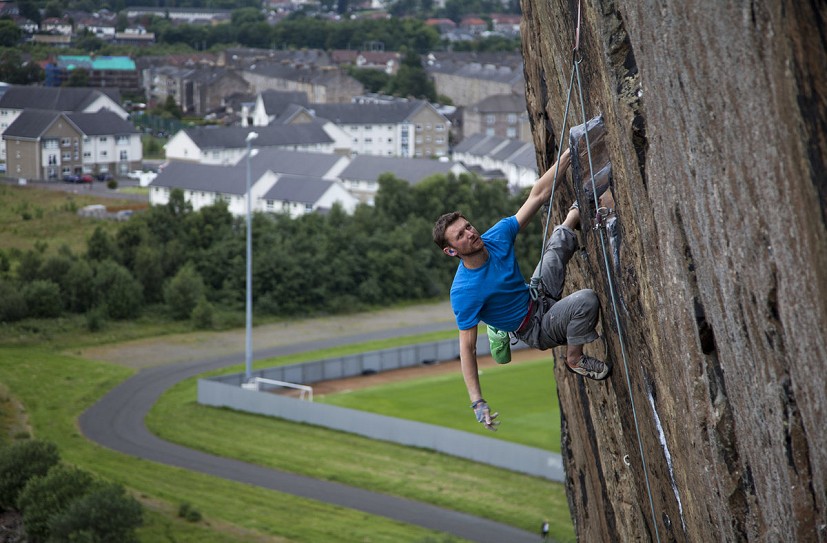
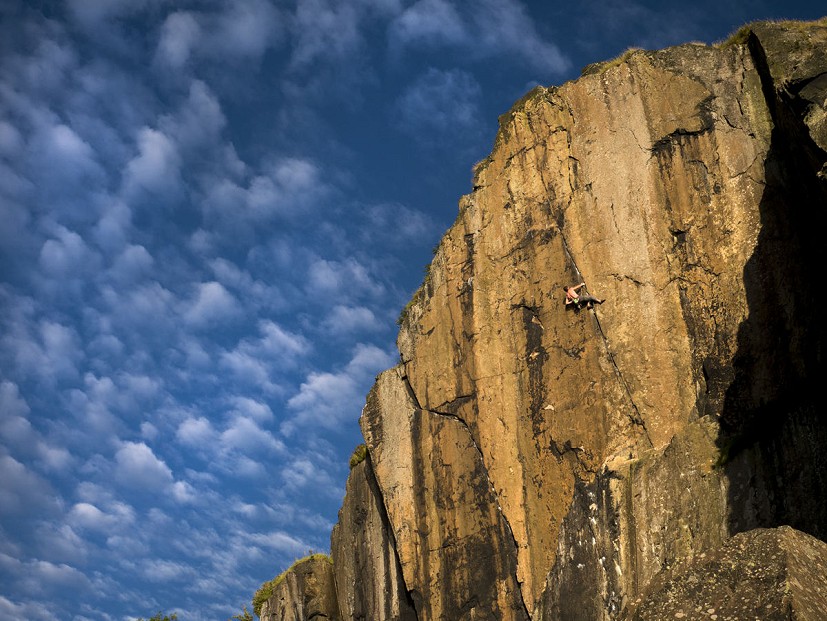
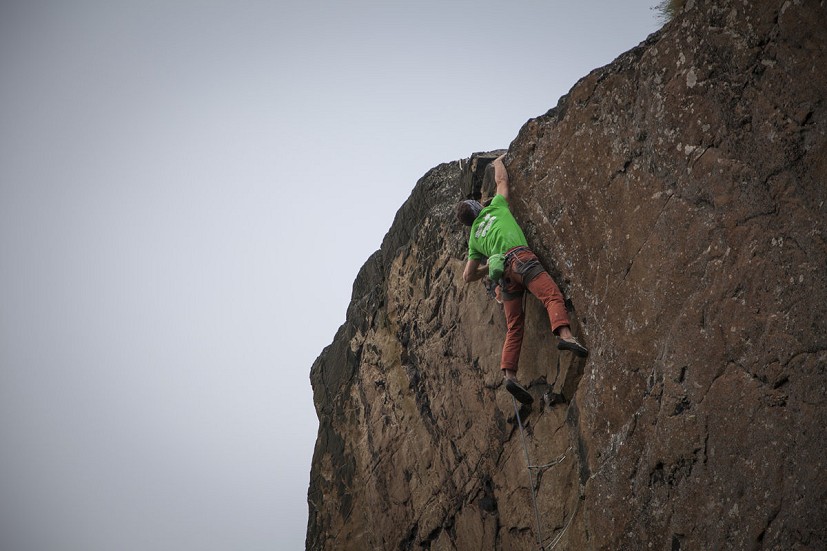
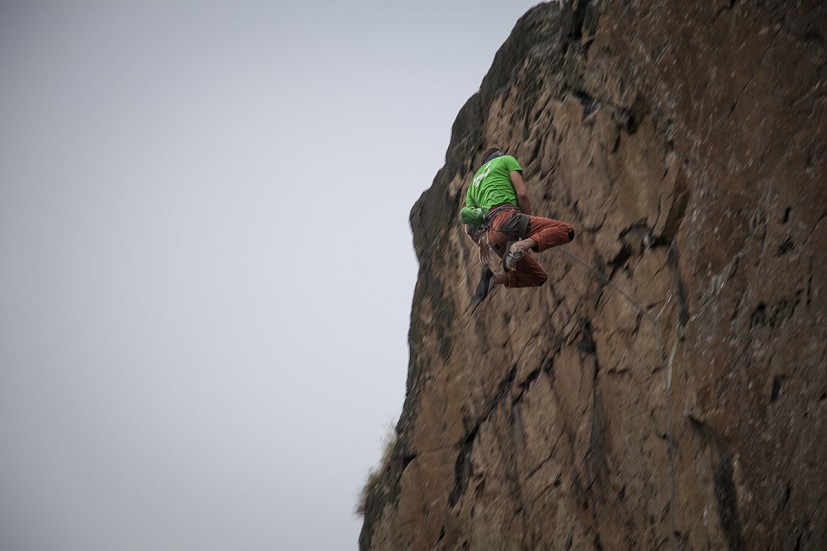
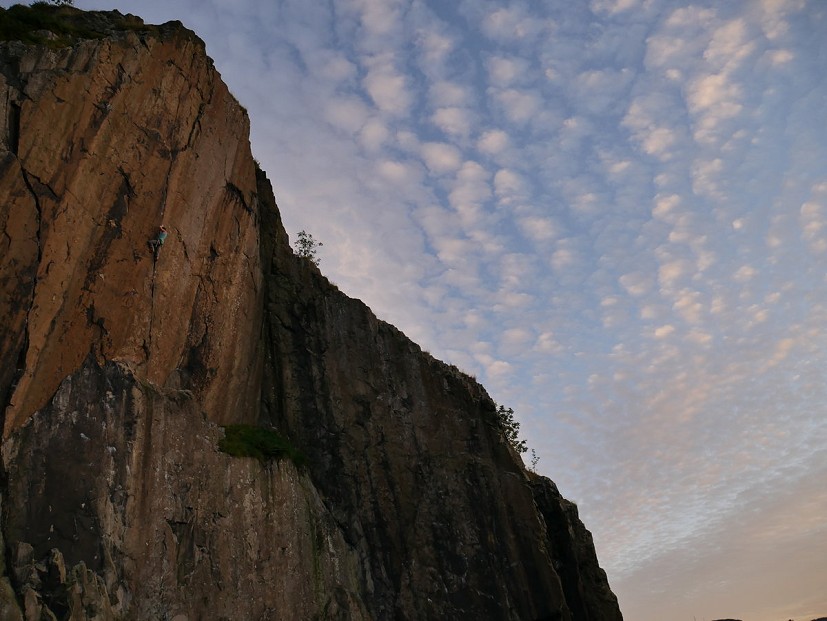

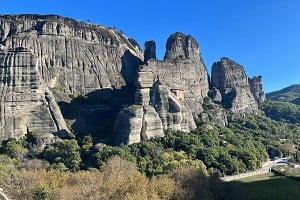

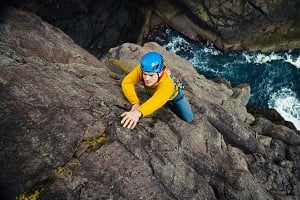
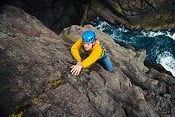








Comments